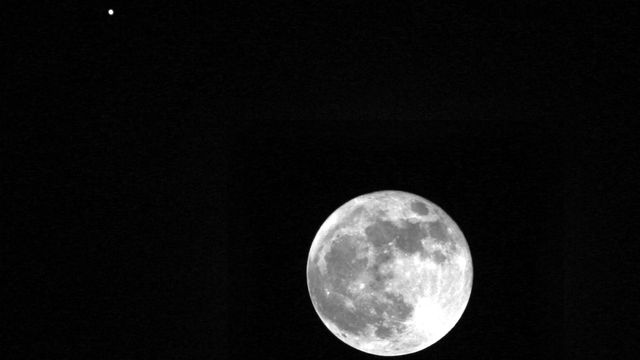Lunar mission to study its thin atmophere
NASA is preparing to return to the moon, this time to study its atmosphere. The Lunar Atmosphere and Dust Environment Explorer (LADEE) will orbit the Moon, studying the atmosphere and lunar dust.
Posted — UpdatedNASA is preparing to return to the moon, this time to study its atmosphere. The Lunar Atmosphere and Dust Environment Explorer (LADEE) will orbit the Moon, studying the atmosphere and lunar dust.
In 1968, the Surveyor 7 lunar lander photographed a glow on the horizon persisting even after the sun had set. Apollo astronauts described a similar effect. This effect has been theorized to be caused by lunar dust. LADEE will measure the size, charge and distribution of dust electrostatically lifted into that thin atmosphere.
Returning attention to the Moon may seem odd with the focus that planetary missions like the Mars rovers and Casini's flights through Saturn's rings have received. What we learn from our Moon will help us understand what is going on elsewhere in our solar system, and it's a lot easier and cheaper to get to.
The Moon's thin atmosphere may be the most common type in our solar system. Icy moons like Europa and more active ones like Io show evidence of similar atmospheres. The asteroid Eros shows similar movement of dust to our Moon.
LADEE also represents a lot of new technology. Unlike previous spacecraft which were custom designed, LADEE is built on the Modular Common Spacecraft Bus. This general purpose platform reduces the time to develop and overall cost of bringing missions from the drawing board to orbit.
Lunar Laser Communications Demonstration (LLCD), a new high bandwidth method for transmitting data will also be tested. A half watt laser on the spacecraft will be watched by 16-inch telescopes on the ground in Virginia and New Mexico. NASA's Goddard Space Flight Center plans to transmit 600 Megabytes per second using this technology.
The mission is currently scheduled for launch this summer from Wallops Flight Facility (WFF) on Virginia's Eastern Shore. Previously, launches from WFF have been limited to sub-orbital ones but 2013 is planned to be a big year for the spaceport.
The first uncrewed resupply missions to the International Space Station is planned for April. Night WFF launches are expected to be visible up and down the mid-Atlantic, including the Triangle.
Copyright 2024 by Capitol Broadcasting Company. All rights reserved. This material may not be published, broadcast, rewritten or redistributed.






